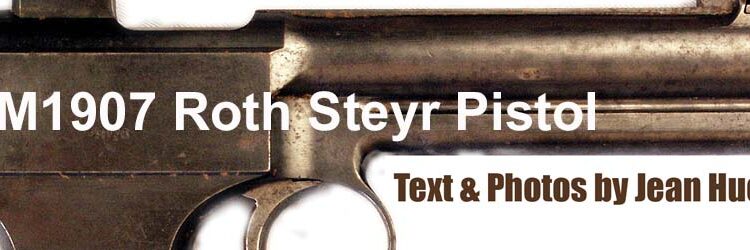By Jean Huon
Mannlicher pistols were not successful in the Austrian Army, but other guns were developed in that country, particularly those of Karel Krnka. Karel Krnka was a collaborator of Georg Roth, manufacturer of weapons in Vienna. In 1899, he had already created a semiautomatic rifle manufactured on a small scale by Haenel in Suhl and patented in Germany under numbers 118061 and 118602. Starting from the same mechanism, Krnka created a Roth-Steyr pistol for the commercial sector in 1905, from which was developed a military model adopted by the Austro-Hungarian cavalry in 1907 and later by other troops.
The pistol was manufactured by Österreichische Waffenfabrik in Steyr in Austria (60,000 specimens), from 1908 to 1913, with a K mark on some parts and Fegyvergyar in Budapest in Hungary (30,000 specimens), from 1911 to 1914, with an R mark. The M 1907 Roth-Steyr pistol remained in service until 1941 or 1942 when they were then employed by Austrians and Hungarians integrated into the Wehrmacht. After World War I, Poland, under war damages, received 17,000 guns including a number of Roth-Steyr 1907s where a Polish inventory of 1939 mentions more than 200 of them.
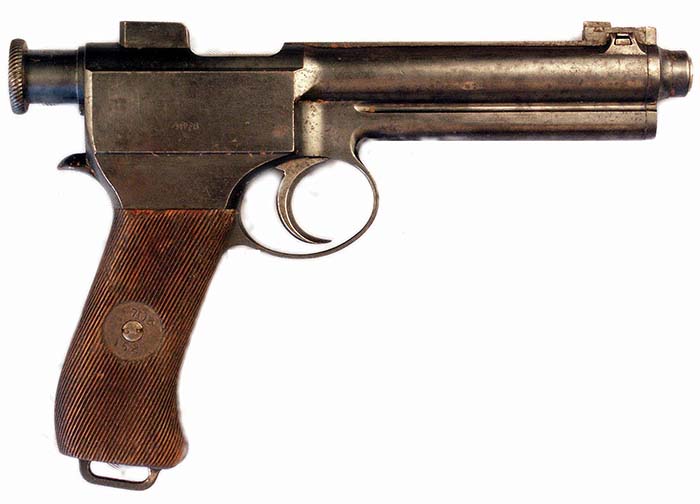
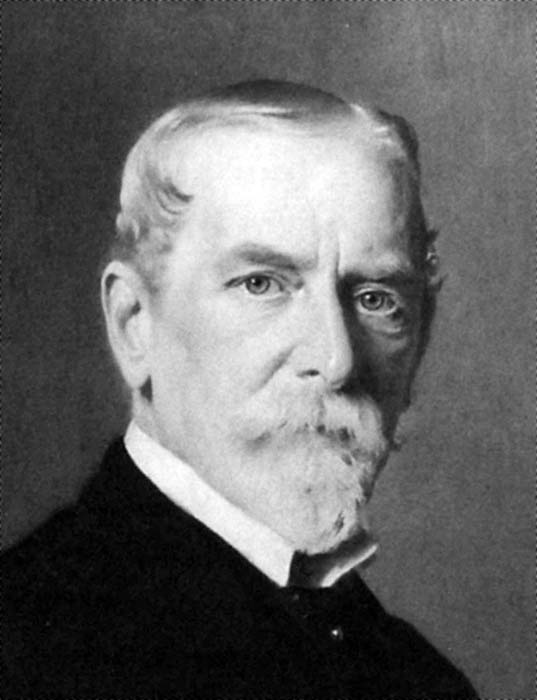
Description
The M 1907 Roth-Steyr pistol is a weapon built entirely with machined steel parts. Two variations of M 1907 Roth-Steyr pistols exist: The first model with large trigger guard and the cam pivot pin machined in the frame a second model with a smaller trigger guard and a built-up cam axis brought back, which can be seen on the right face of the frame at the top of the grip.
This weapon has no detachable magazine, but a fixed magazine located in the grip, loaded with a stripper clip, like a Mauser rifle. To unload the magazine it is necessary to open the bolt and press the cartridge stop.
The frame is also used as the grip. It is provided with a cover plate on the left side. This plate is embedded in the frame at the front in top and is kept in place when the left grip is assembled. On the inner face is assembled the bolt hold open latch. The magazine is composed of a parallelogram-shaped case with a tubular extension at its base, mounting the following spring. On the left face of this magazine is the button that retracts the cartridge stop to unload the weapon.
The grips are furnished with two obliquely striated wood plates that on the left is fixed by a traditional screw; that of right-hand side is held in place by a screw removable by a screwdriver with prongs, which at the same time keeps in place a disc on which is inscribed the number and the name of the unit to which the gun is issued, although this is not on all examples.
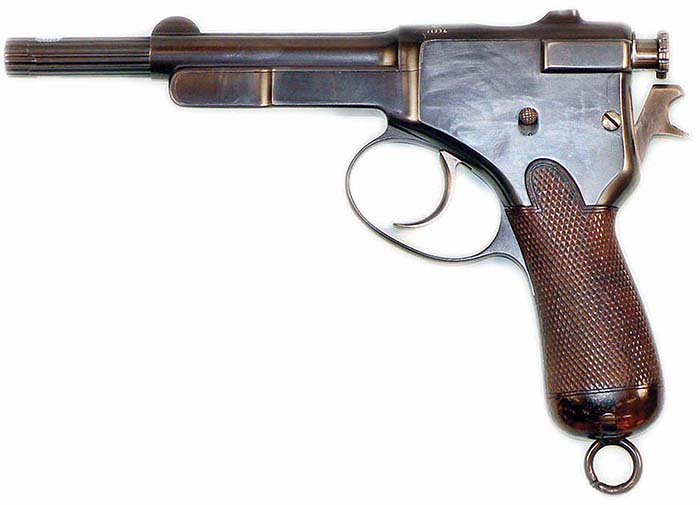
The upper part of the frame is machined with two superimposed cylindrical elements, the top one receives the bolt and the barrel and the bottom one the recoil spring. One can only marvel at the complexity of the parts and the precision of machining when computer controlled machining did not exist. At the rear are the ejection port and a clip guide.
The trigger mechanism is located on the left side of the frame and comprises the trigger, cam and sear. They pivot on pins machined into the frame, except the cam whose pin is built-up on the second model.
The slide is a cylinder, hollowed at the front to receive the barrel. The rear part holds the firing pin and its spring. The posterior end is threaded to receive a plug. The barrel is cylindrical, and has two guide ribs at the front and at the back two locking lugs. Its calibre is 8mm (.32) and it has four grooves with the right hand twist. The slide is held to the frame by a plug locked by a cross pin before the front sight. The recoil spring is assembled with a minimum of tolerance in its housing and does not have a guide, but only a stop at the back. The sights are composed of a V notch, milled in the clip guide and a front sight dovetailed into a stud that also receives the cross pin for the slide plug.
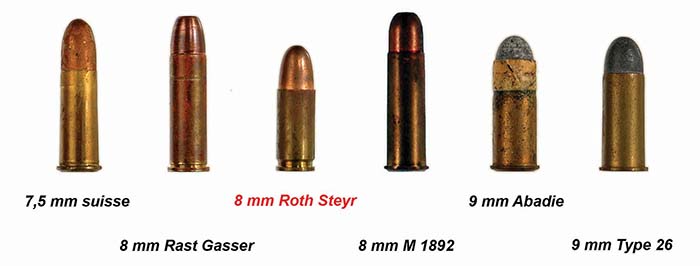
M 1907 Roth Steyr pistol
Caliber: 8 mm (.32)
Cartridge: 8 mm Steyr (8 x 18)
Overall length: 232 mm (9.13 inches)
Barrel length: 128 mm (5.03 inches)
Height: 159 mm (6.26inches)
Weight: 1.020 grams (2.20 lbs)
Mag. capacity: 10 rounds
Operation
Pull the slide to the rear and hold it back with its stop (a square button located in top of the cover plate of the left side). Place a clip loaded with cartridges on the guide. Press down firmly to introduce the column of cartridges into the magazine. Push the bolt latch, the bolt closes and pushes a cartridge in the barrel. The striker is in the cocked position and the pistol is ready to fire. The shooter pulls the trigger and the hammer falls on the firing pin igniting the cartridge. Under the action of the recoil, both the barrel and slide recoil. But after a short movement, the barrel rotates, guided by its front lugs and unlocks the slide which continues to move back. The empty case is extracted and ejected. The slide is now at the rear position and the recoil spring is compressed. Under the action of the recoil spring, the bolt closes and a new cartridge is pushed in the barrel, the bolt is locked and the pistol ready to shoot again.
To unload the pistol, lock the slide to the rear by the bolt latch. If there were a cartridge in the barrel it is extracted and ejected. Push the cartridges stop button to retract it and recover the cartridges in the palm of the other hand.

Disassembly-reassembly
- Put the weapon on safe.
- Open the bolt and lock it in the rear position.
- Press the stop button which locks the rear plug.
- Unscrew the rear plug.
- Press the bolt open latch and let it to move backward.
- Push the flat locking pin of the barrel from right to left.
- Take off the plug.
- Extract the barrel, slide and recoil spring group by the front.
- Separate the slide and the barrel.
- Unscrew the left grip plate.
- Take off the cover plate.
- Take off the magazine.
- It is not necessary to continue disassembly for normal maintenance.
- Reassembly is carried out in the inverse order.
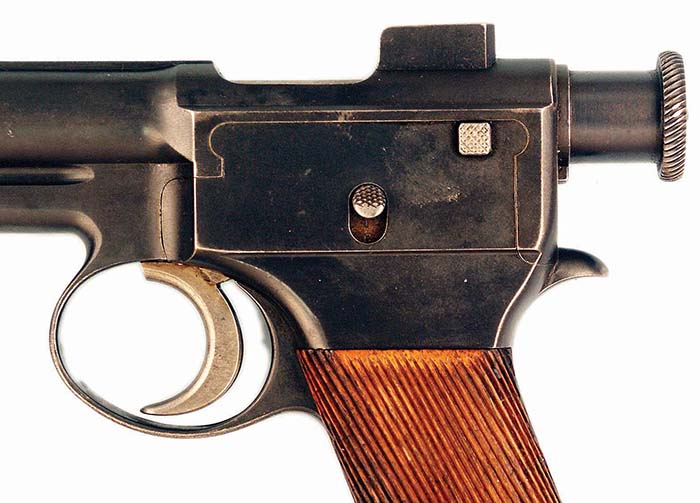
Ammunition
This cartridge, standard in the Austro-Hungarian Army, was adopted in 1907. It remained in service a long time after the adoption of the M 1912 Steyr pistol, and could also be found during WW II. Its manufacture was mainly concentrated around the German and Austrian cartridge factories. It was listed on a Fiocchi catalog some years ago, but this did not mean it was available… The rimless cylindrical case measures 18.7 mm long. The Austrian service cartridge has a cylindro-ogival bullet weighting 7.20 grams (112 grains), with a lead core and a cupronickel jacket. The velocity was 320 m/s (1,052 fps). The Fiocchi Italian cartridge, fires a 7.30 grams (114 grains) gilding metal jacketed bullet at 330 m/s (1,085 fps).
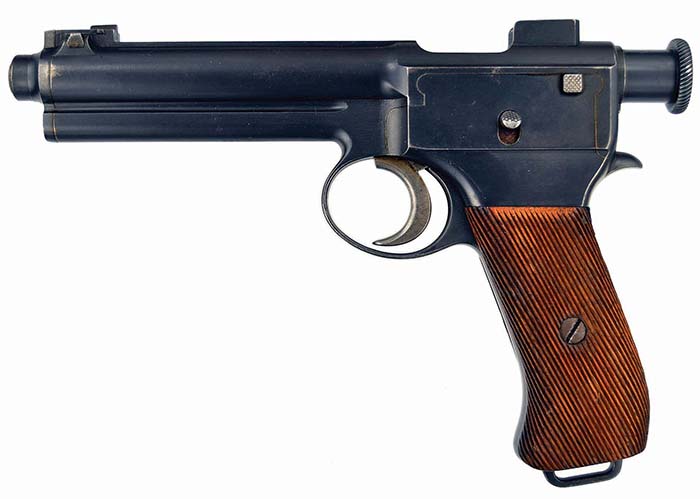
Holster
The holster for this gun consists by assembling several elements joined together by seams, with the borders covered with thinner leather. The assembly is reinforced by rivets. The holster is suspended from a cross-belt which contains the belt loops, with the result that this holster was carried low.
The body is triangular and permits an easy extraction of the gun. The cover closes the holder over the pistol grip and is closed by a strap locked on a spherical rivet. This last also receives the strap for the clip pouch, placed behind the holster and which can hold several clips. A wooden shoulder stock, which can be also used as a holster, was also developed.
The M 1907 Roth-Steyr pistol is a superb weapon and a little marvel of European arms manufacture at the beginning of the 20th century.
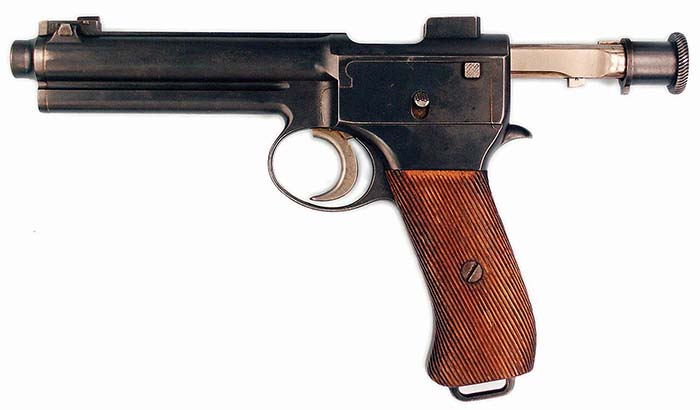
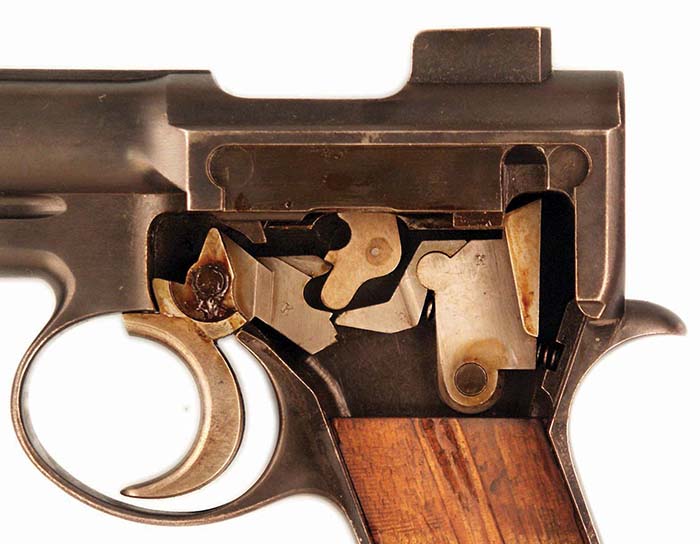
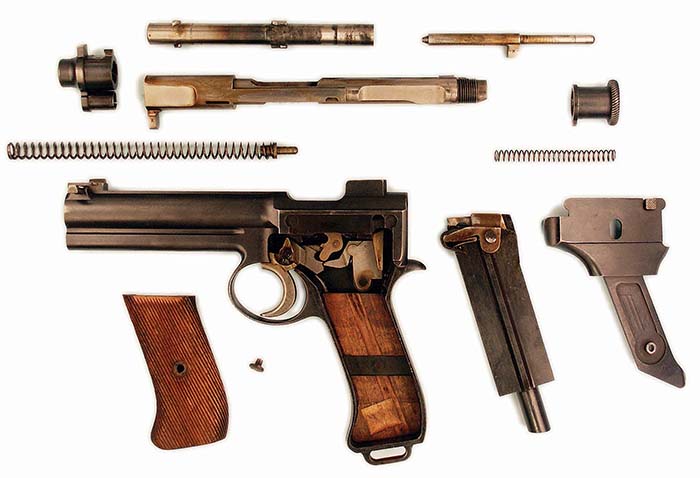
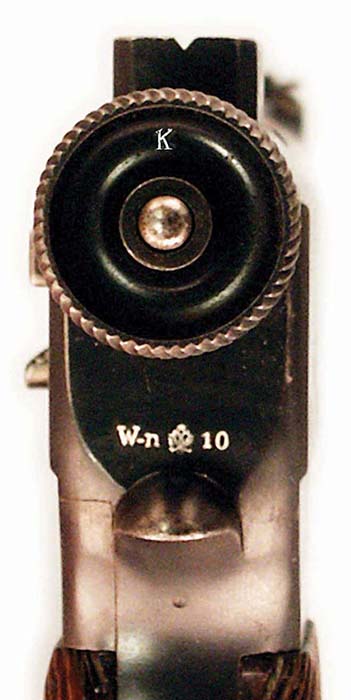
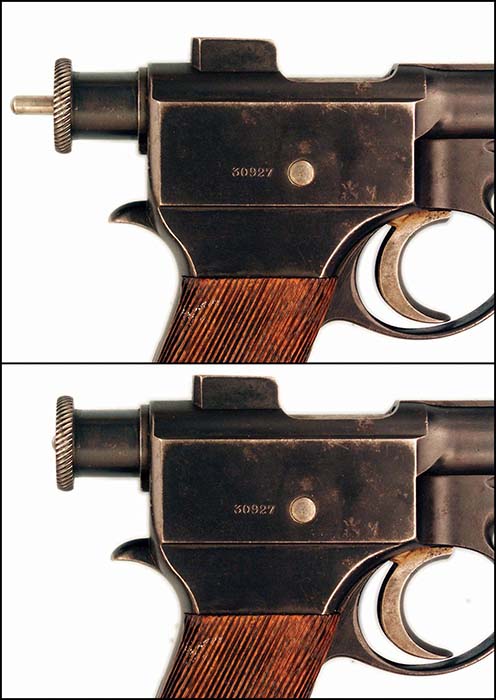

| This article first appeared in Small Arms Review V17N2 (June 2013) |



